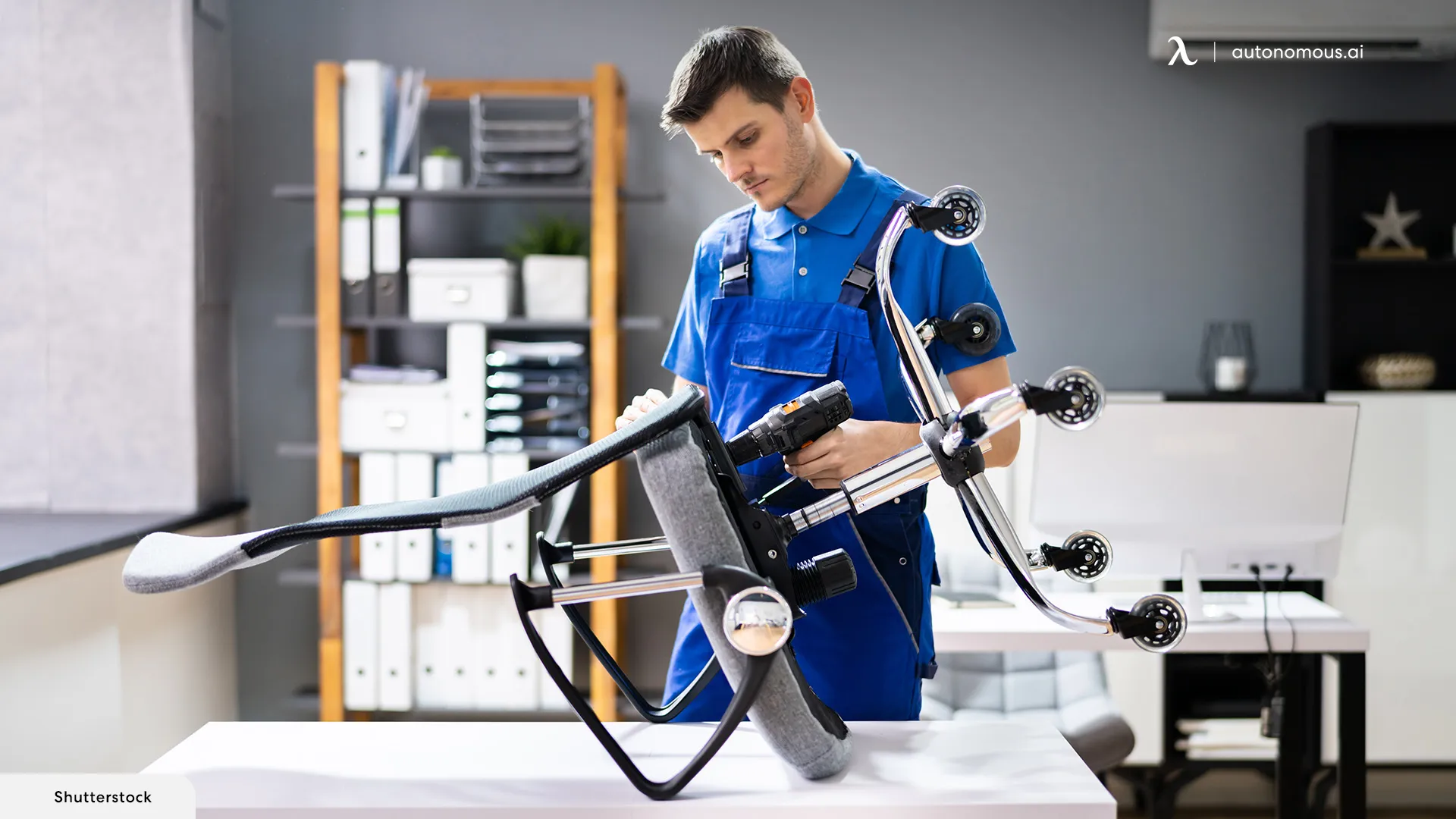
How to Fix an Office Chair Leaning to One Side?
Table of Contents
Has your seating arrangement ever been defiant, leaning to one side like a chaotic friend?
Whether it's influencing your posture or causing discomfort, it's important to identify the possible causes and execute effective adjustments to create a pleasant environment.
As a result, we have looked at realistic and easy ways to fix a typical problem - an office chair leaning to one side.
Why Is a Properly Aligned Chair Important?
You can't be comfortable or concentrate in your workplace chair until it's positioned correctly. According to UCLA Ergonomics, the seat of a chair should have a range of motion to allow you to assume different positions and postures as needed to complete your duties.
On the other hand, bad posture and discomfort result from an office chair that tilts too far to the right and won't come back to a straight position. Given the wide variety of office chairs available, it's impossible to provide universal troubleshooting advice. However, following some basic procedures can guide you on how to fit an office chair leaning to one side.
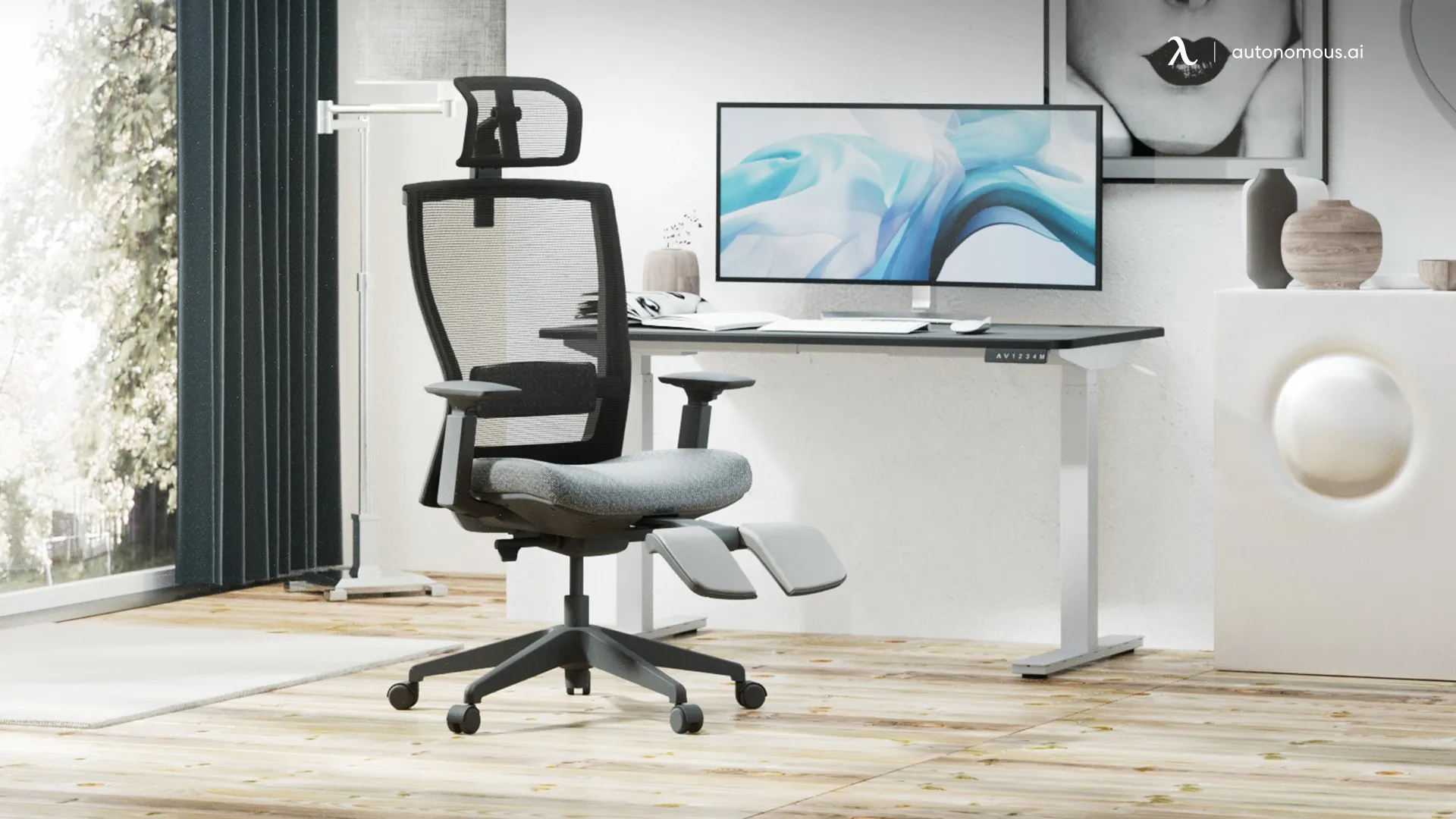
Why Is My Office Chair Leaning to One Side?
It is critical to identify the cause of a sagging office chair. The age-old dilemma of "Why does my office chair lean to one side?" has a simple solution: identify the root of the problem.
Sit on the Chair to Find the Problem
Finding the source of the problem should be your first step in solving it. Just sit in that chair and figure out what the issue is; then, you'll know if your chair is slanting or leaning.
Turn the Chair Upside Down
Invert the chair so it stands upright; having a seat touch the floor and the legs resting on the tabletop will help you identify the problem easily.
Inspect the Wheels
Now that you've turned the chair upside down, you can examine the legs. The damaged chair wheel can be located with relative ease in this manner. A broken wheel or caster malfunctioning is usually at blame when the issue of an office chair leaning to one side arises.
Check to See if Any Screws Are Missing
If wheel casters aren't the issue, check for any missing or loose screws. The weight of the chair is a common culprit in screw popping out. You may also have trouble leaning because of a screw that sprang up.
Examine the Metal Seat Plate
Under the seat of every hydraulic chair, you'll find a metal plate. The hydraulic lever, adjustment lever, and many screws and bolts are all housed on this plate. Verify that the seat is stable and all screws are secure and not loose.
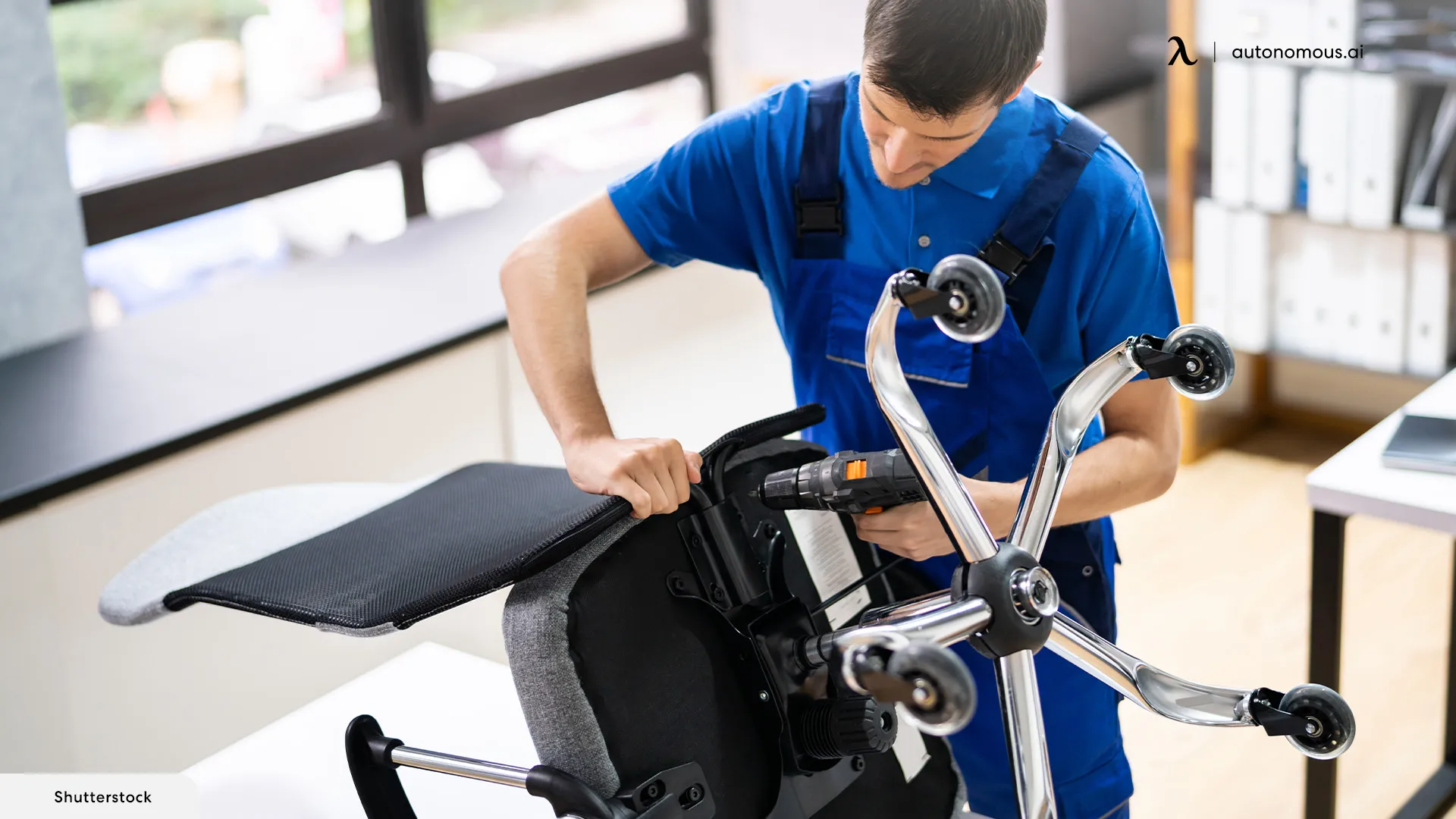
How to Fix Office Chair Leaning to One Side?
Step 1: Replace the Casters
Check to verify if the chair is leaning to the right or left by comparing the wheels on each leg. If one of them is bent or otherwise flawed, the chair will not sit straight and it will be necessary to replace or remove casters wheels that are damaged.
In most cases, castings are easier to remove from sockets than to insert into them; grease the sockets to remove caster wheels and make things easier. Most casters may be unscrewed with a Phillips or flat-head screwdriver or simply pulled off.
When you come across any damaged casters, be sure to purchase a new set that matches. Considering how difficult it is to get a single replacement caster for an office chair, it's more cost-effective to purchase a new set.
If the chair is resting on a level surface and all of the casters are in good working order, then you can jump to the second most probable reason for your office chair leaning to one side.
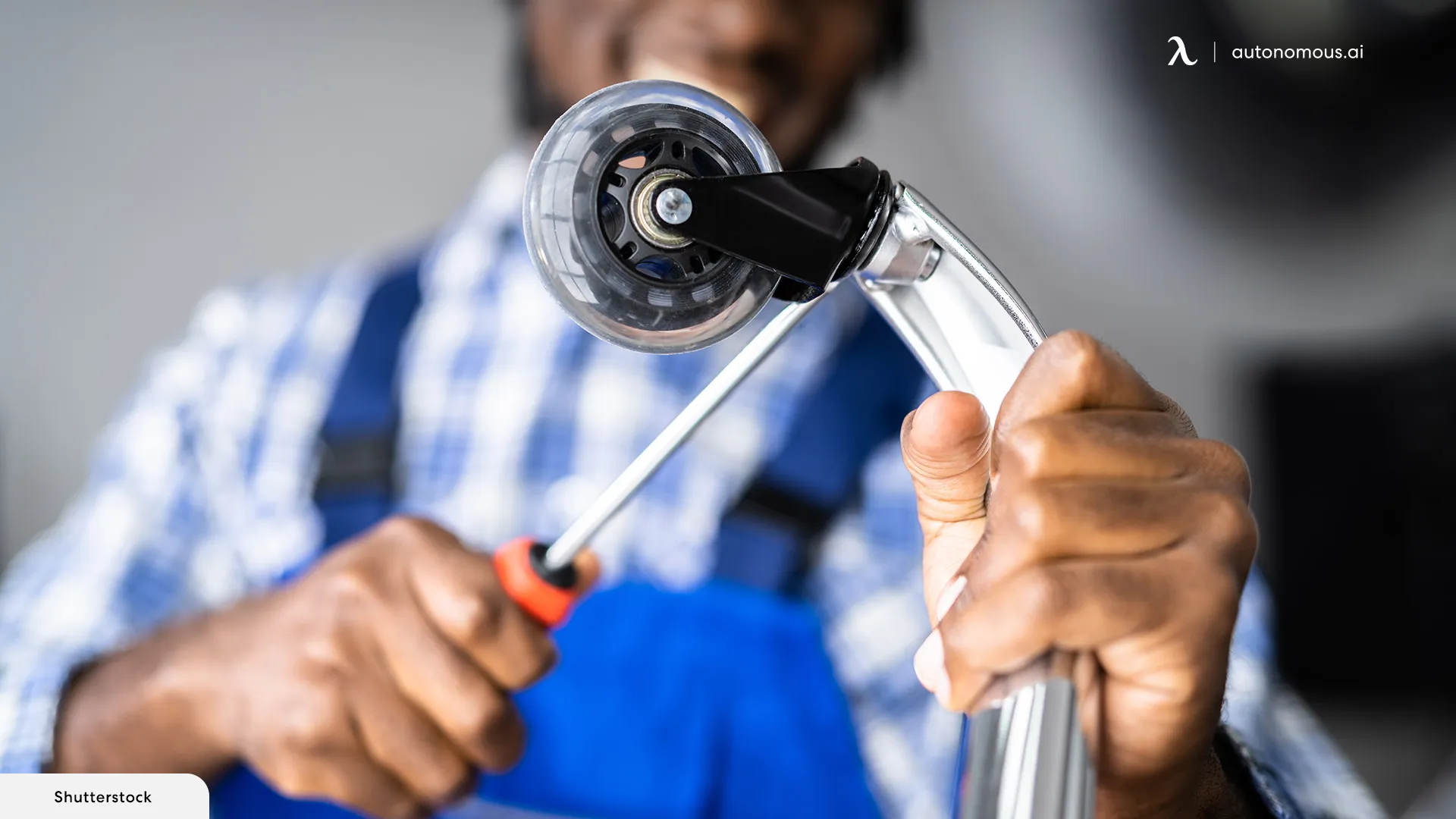
Step 2: Tighten and Replace Screws
Look for a missing or loose screw in the chair's legs; if that's the case, look around for the screw. If you are unable to find the screw and do not have a replacement screw of a comparable size, you'll have to buy one from any nearby hardware store. To be sure you receive the right size, bring one of the spare screws along.
Step 3: Repair the Seat plate
If casters and screws aren't the issue, the metal plate under the seat can be the culprit. Verify that the plastic seat rest holder is securely fastened with all bolts. Your office chair leaning to one side can be due to bolts that are missing from the side of the plate. Obtain new bolts and use an adjustable wrench to screw them in if that's the case.
If the chair's bolts are still present, it could be because the seat plate is deformed or damaged; in this instance, you'll have to get a new one. When it comes to ergonomic office seats, this is a typical issue.
Step 4: Backward Leaning
If your office chair leans too far back, it can also be a major issue.
First, find out if the chair can be adjusted for tilt tension. To increase the amount of resistance, you feel when reclining; you might have to make a few adjustments. The knob is typically located under the seat in the middle; you may adjust the tension by releasing or tightening the knob. The seat height of your office chair should be adjustable to your liking.
Look for a lever behind your chair. If you can't find this knob, you may lock the back into a specific position with this lever. Even though it locks the back, pulling this lever isn't the best guide on how to fix an office chair leaning to one side.
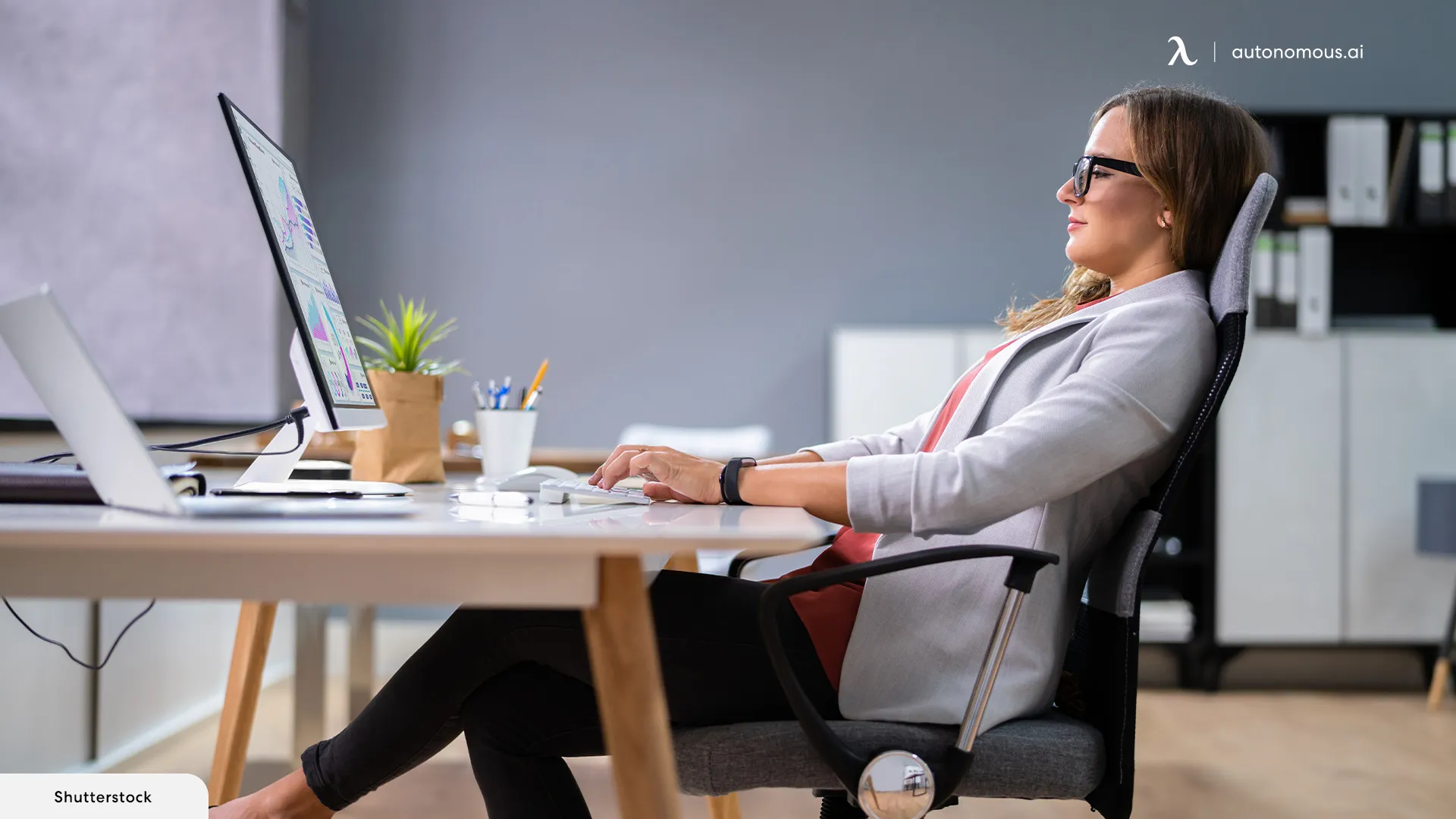
How to Keep Your Office Chair in Top Condition?
Your office chair requires routine cleaning and maintenance, just like any other piece of office furniture or appliance.
If you want to keep your chair in pristine condition, follow these simple guidelines:
- It's important to clean office chairs regularly.
- Get as much dust off the chair's seat as you can with a hoover.
- Dust and other debris can jam the wheels, making it impossible for the chair to roll. To prevent this, clean and grease the casters regularly.
- To keep your feet flat and at the correct height while sitting in your office chair, replace the gas cylinder if it keeps sinking.
- Sunlight can fade the upholstery and other components of your chair, so it's best to shield it from the sun as much as possible.
- Loose screws can cause your office chair to lean backward or forwards, so it's a good idea to tighten them.
- Applying conditioner to your leather chair once every few months will keep it from drying out.
- Ensure regular office chair repair and maintenance.
Conclusion
An office chair leaning to one side is not only unsafe but also causes discomfort and even injuries. It is critical to address this without delay.
We hope that our ultimate guide on why your office chair leans to one side and how to fix this issue was insightful and that you get your office chair fixed in a breeze.
Stay connected with us!
Subscribe to our weekly updates to stay in the loop about our latest innovations and community news!
Interested in a Link Placement?
Spread the word
.svg)
.svg)



/https://storage.googleapis.com/s3-autonomous-upgrade-3/production/ecm/230914/bulk-order-sep-2023-720x1200-CTA-min.jpg)

/https://storage.googleapis.com/s3-autonomous-upgrade-3/production/ecm/230824/EthanJohnson-ffebe8b4-4650-46f9-a3b3-ed980acaad86.jpg)